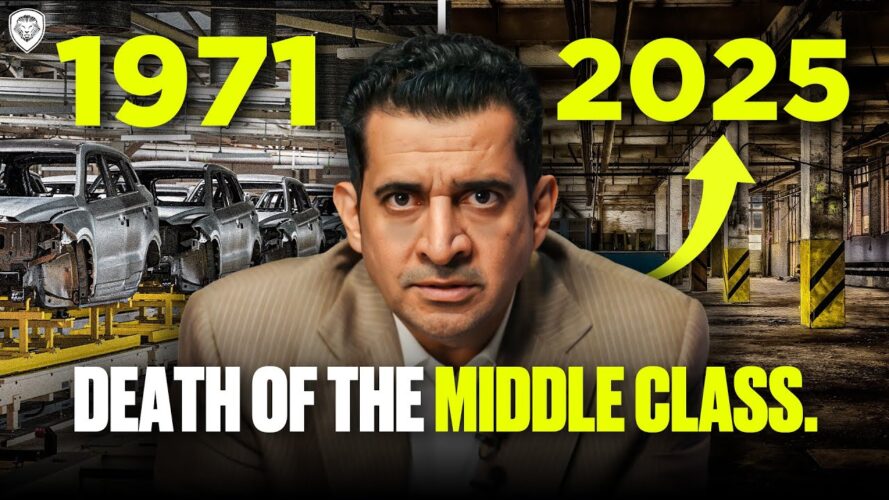In this video, Patrick Bet-David explains how Nixon’s 1972 visit to China and China’s 2001 entry into the WTO triggered the loss of millions of US manufacturing jobs.
From cheap labor costs driving outsourcing to the devastation of states like Michigan, Ohio, and Pennsylvania, this video explores the economic fallout on Middle America, the rise of the Rust Belt, and how tariffs are now bringing jobs back.
Subscribe to Valuetainment for more deep dives, explainers, and motivational videos from PBD!
The Turning Points: Nixon & China
The issue largely comes down to the consequences of two key decisions:
-
President Nixon’s 1970s visit to China, which initiated US-China economic relations after 25 years of silence.
-
China’s admission to the World Trade Organization (WTO) in 2001, which supercharged globalization and outsourcing.
In the 1970s, labor in China cost around 8 cents an hour, compared to $1.60 in the U.S. This massive wage disparity incentivized American companies to offshore production, kicking off a wave of outsourcing.
By the time China joined the WTO, US labor was 15 times more expensive than Chinese labor. That difference lured manufacturers abroad. The result? America lost over 6 million manufacturing jobs in just a few years.
From Factory Floors to Ghost Towns
The decline in American manufacturing hit industrial states the hardest. The video walks through several striking examples:
-
Michigan: Once the heart of U.S. auto manufacturing, cities like Detroit saw a population collapse of over 50% from 1970 to 2010, with unemployment reaching up to 40% in some neighborhoods.
-
Ohio: The infamous 1977 “Black Monday” shutdown in Youngstown laid off 5,000 workers instantly, triggering a domino effect that cost the region over 50,000 jobs.
-
Indiana, Pennsylvania, Illinois, North Carolina, Wisconsin, New York, California: All suffered major economic blows as steel mills, textile plants, and aerospace industries downsized or shuttered entirely.
Bethlehem Steel, once a titan of American industry, went bankrupt in 2001—the same year China joined the WTO. Cities built around single industries became shells of their former selves.
The Rich Got Richer—The Rest Got Left Behind
As production moved overseas, corporate profits surged. But the middle class was gutted. A chart in the video shows that since 1979:
-
The top 1% of earners saw income grow dramatically.
-
The bottom 20% gained more, thanks to welfare and social support.
-
But the middle 60%—America’s working backbone—saw the lowest growth of all.
This economic hollowing, the video argues, created widespread insecurity, resentment, and weakened communities, as men and women lost not just income, but also purpose and dignity.
Tariffs: A Painful but Necessary Reset?
The world’s focus is now shifting to potential tariffs, particularly under Trump-era policies, to reverse these trends. Though controversial, tariffs have led companies like Apple to commit to investing $500 billion in the U.S. Other global giants are also moving operations back to the States from China, Mexico, and Canada due to rising costs and strategic pressure.
Even control over the Panama Canal—a key global trade artery—is being reasserted by the U.S., the video claims, signaling a broader shift in leverage away from China.
What Comes Next?
On a hopeful but cautionary note: jobs are coming back, but it won’t be easy. Tariffs may cause short-term pain, but they could ultimately help rebuild American manufacturing and restore dignity to working families.
Patrick emphasizes that real community stability starts with employment. More jobs mean safer neighborhoods, stronger families, and less crime. But America must be willing to endure discomfort for long-term gain.
Bottom Line:
Decades of globalization sent American manufacturing to China, gutting middle-class towns across the country. Now, through strategic tariffs and re-shoring policies, there’s a chance to bring those jobs—and pride—back. But the path forward will test the nation’s resolve.


















Add comment